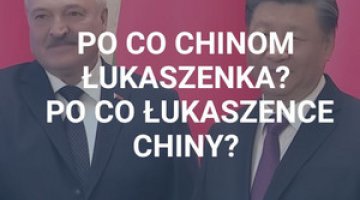Lukashenka’s diplomatic offensive outside Europe
On 8 December, Belarusian president Alyaksandr Lukashenka visited the United Arab Emirates, where he met President Muhammad ibn-Zayid al-Nahayyan. Their topics of discussion included deepening bilateral trade and investment cooperation. Lukashenka then visited Equatorial Guinea on 9–10 December, where he was received by President Teodoro Obiang Nguema Mbasogo. They discussed the possibilities of increasing bilateral trade, and signed a roadmap for the development of cooperation at the end of the meeting. Lukashenka emphasised the great potential of Guinea, which Minsk sees as a “promising hub” via which goods from Belarus (including agricultural machinery) can be exported to the markets of West and Central African countries. The opening of diplomatic missions in both countries, which is expected to take place by the end of 2024, was also announced. The final item on Lukashenka’s foreign trip was a working visit to Kenya, where he stayed from 10 to 11 December. The talks he held with the leader of that country, William Ruto, also focused on trade and investment.
Lukashenka’s trip to countries in Africa and the Middle East was preceded by a clear revival of Belarusian foreign policy in this vector. The head of Belarus’s foreign ministry Syarhei Aleynik has visited Equatorial Guinea twice in recent months, and that country’s president came to Minsk in September. Lukashenka then officially signalled his interest in strengthening relations with Kenya and invited its leader to Belarus. For several years Belarus has also been developing cooperation with Zimbabwe, where Lukashenka paid an official visit on 30 January – 1 February this year. At the same time, an intensification of Minsk’s contacts with South American countries can be noted: on 4 October Nicaragua’s finance minister Iván Acosta Montalván visited Minsk and declared that the country’s seaports would be made available to Belarusian goods destined for Latin American countries. Belarus has also maintained its long-standing active cooperation with China: on 3–4 December, Lukashenka paid his second visit this year to Beijing, where during a meeting with the PRC’s leader Xi Jinping the two sides exchanged assurances on strategic partnership.
Commentary
- The intensification of Minsk’s activity outside Europe which has been observed in recent months is motivated by the need to find new markets for Belarusian exports, which have been bound by the series of sanctions introduced by the EU and the US since 2020. As Belarusian officials have acknowledged, the losses resulting from these restrictions, as well as those caused by the almost complete suspension of trade with Ukraine (following Minsk’s support for its invasion by Russia), amount to at least $10 billion. By contrast, the EU’s share of trade with Belarus has fallen to 5% from the level of 20–30 at which it was running before the breakdown of Minsk’s dialogue with the West in 2020. From the incomplete data available, it appears that Belarusian producers have been able to compensate for some of these losses by increasing exports to the Russian market, which now accounts for around 70% of Belarus’ trade turnover (as of 2020 it was 50%). Minsk would nevertheless like to reduce its trade dependence on Moscow by developing its contacts on other continents. It must be mentioned here that at present transit from Belarus can effectively only take place via Russia.
- Minsk’s ‘diplomatic offensive’ in non-European countries can hardly be expected to lead to any significant changes in Belarusian foreign trade patterns. The complicated and costly logistics of supplying the markets of African & South American countries, and the different structure of demand on those markets, will not create favourable conditions for significant increases in sales. The limited potential of this cooperation is indicated by data on Belarusian exports to Africa, which is currently one of Minsk’s priorities. In September Belarusian prime minister Raman Halouchenko revealed that in 2022 the total value of Belarusian goods sold to all the countries on this continent amounted to $200 million (out of a total figure for Belarusian exports of $38 billion), half the amount of 2019. At the same time, the head of the Belarusian government did not hide his disappointment that so far, “political declarations” have not translated into results in foreign trade. Also problematic for Minsk is the much more worthwhile trade with China, where imports from the PRC still vastly outnumber exports from Belarus (from January to August this year, imports from China accounted for up to $3.8 billion of the $5.8 billion turnover).
- The Belarusian side is primarily motivated to become more active in Africa, Asia and South America by economic issues, although it is also hoping to gain some political benefit from doing so. During Lukashenka’s visits to the non-European countries, and during his meetings with guests from these areas in Minsk, he presents an anti-Western narrative, which – especially in his talks with African leaders – he embellishes with criticism of the policies of ‘colonial legacy’ conducted by the European metropolises. One important aspect of the Belarusian government’s efforts involves not only attracting new contacts, but also maintaining close cooperation with its long-standing partners such as the PRC and the UAE. This is how the regime, which is isolated by the West, seeks allies (who could be useful, for example, at the UN) while at the same time demonstrating its international legitimacy, including in its propaganda to its citizens. Furthermore, although this is not overtly mentioned in Lukashenka’s public statements, Belarus’s recent high activity outside Europe may also represent an attempt to reduce (at least slightly) its domination by Russia. However, considering the current scale of the country’s dependence on Moscow, such efforts are doomed to failure. At the same time, Minsk’s activities cannot compete with the economic and political presence Russia already enjoys on these continents.




